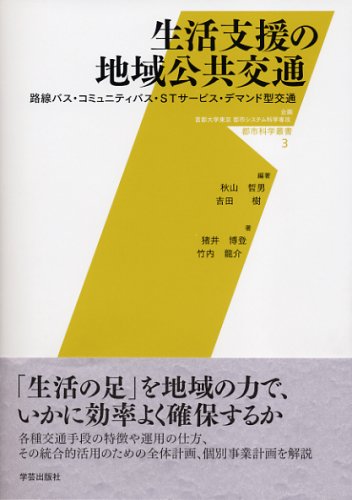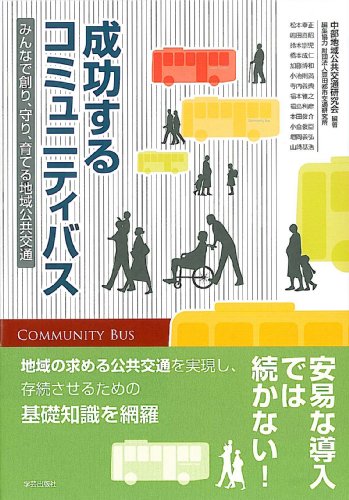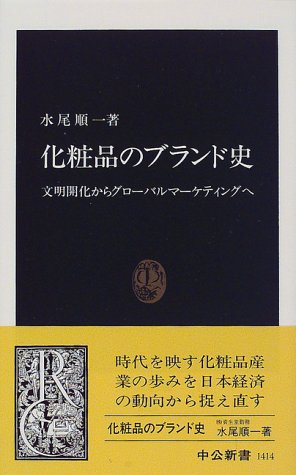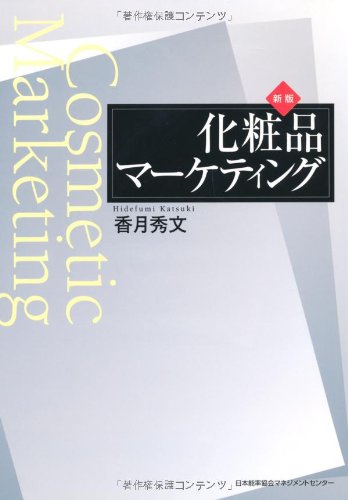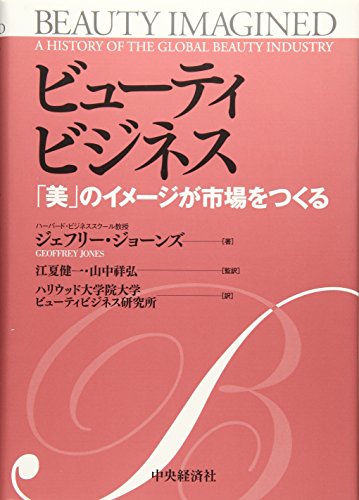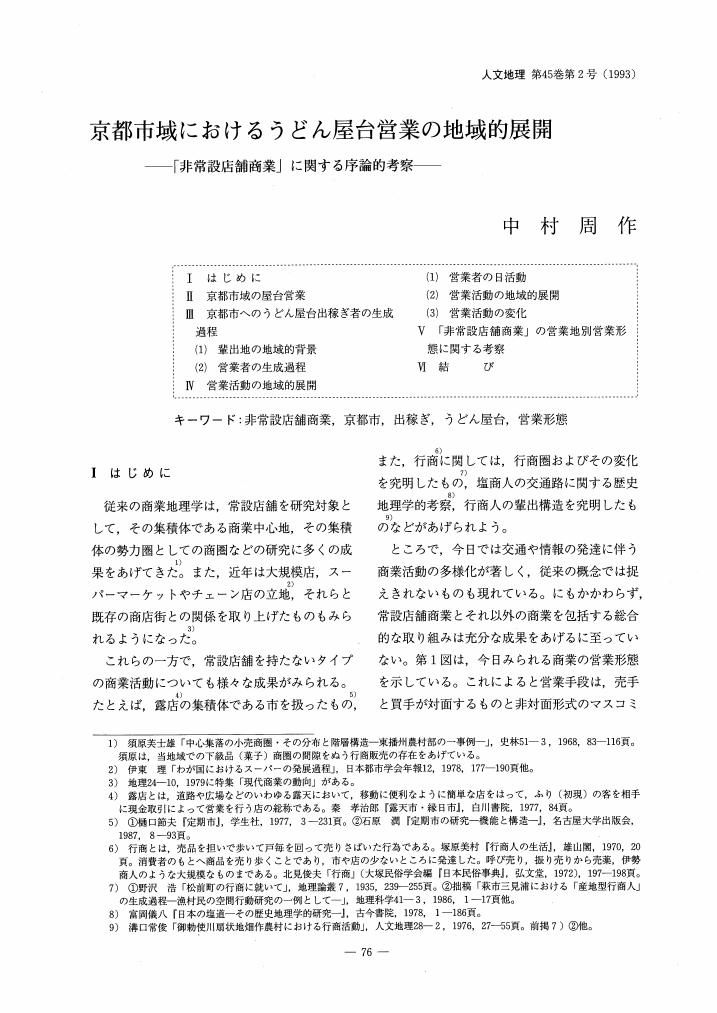- 著者
- 秋山哲男 吉田樹編著 猪井博登 竹内龍介著
- 出版者
- 学芸出版社
- 巻号頁・発行日
- 2009
- 著者
- 中部地域公共交通研究会編著
- 出版者
- 学芸出版社
- 巻号頁・発行日
- 2009
- 著者
- Asano-Mori Yuki
- 出版者
- 日本医真菌学会
- 雑誌
- Medical Mycology Journal
- 巻号頁・発行日
- vol.58, no.3, pp.E97-E105, 2017
- 被引用文献数
- 3
The risk of invasive fungal infections (IFIs) is extremely high in patients with hematological malignancies due to the prolonged and profound neutropenia and immunosuppression after chemotherapy and hematopoietic stem cell transplantation. There has been increasing interest in mucormycosis despite its relatively uncommon occurrence, because occasional breakthrough infections have been observed under anti-<I>Aspergillus</I> prophylaxis. The aggressive nature of mucormycosis easily leads to high mortality because of delays in diagnosis and incorrect treatment decisions, which are due in part to lack of adjunctive diagnostic tools and having similar clinical and radiological features with invasive aspergillosis. The only currently available antifungals against Mucorales in Japan are amphotericin B formulations. Thus, comprehensive therapeutic strategies, including surgery, should be considered to achieve a successful outcome.
- 出版者
- 日経BP社
- 雑誌
- 日経コミュニケーション (ISSN:09107215)
- 巻号頁・発行日
- no.471, pp.82-85, 2006-10-01
オフィス用品通販大手のアスクルは,配送パートナとリアルタイムに配送状況を共有できる物流システム「シンクロカーゴ」を構築した。カシオ計算機の専用端末を使い,配送拠点内では無線LANから配送中はBluetooth経由で携帯電話から配送状況をシステムに登録する。狙いは顧客満足度の向上だ。
1 0 0 0 化粧品のブランド史 : 文明開化からグローバルマーケティングへ
1 0 0 0 化粧品マーケティング
- 著者
- 香月秀文著
- 出版者
- 日本能率協会マネジメントセンター
- 巻号頁・発行日
- 2010
1 0 0 0 ビューティビジネス : 「美」のイメージが市場をつくる
- 著者
- ジェフリー・ジョーンズ著 ハリウッド大学院大学ビューティビジネス研究所訳
- 出版者
- 中央経済社
- 巻号頁・発行日
- 2011
1 0 0 0 IR 思想犯保護観察法の歴史的分析-1-
- 著者
- 菊田 幸一
- 出版者
- 明治大学法律研究所
- 雑誌
- 法律論叢 (ISSN:03895947)
- 巻号頁・発行日
- vol.44, no.5, pp.95-132, 1971-10
1 0 0 0 OA 雛あそび乃記 2巻
- 著者
- 度會直方 著
- 出版者
- 松村九兵衞 [ほか2名]
- 巻号頁・発行日
- 1749
1 0 0 0 OA 超音波プラスチック溶着の有限要素シミュレーション
- 著者
- 安藤 英一 加川 幸雄
- 出版者
- 一般社団法人 日本音響学会
- 雑誌
- 日本音響学会誌 (ISSN:03694232)
- 巻号頁・発行日
- vol.51, no.6, pp.472-479, 1995-06-01 (Released:2017-06-02)
超音波プラスチック溶着はプラスチック製品の組み立て手段として、広く用いられている。しかし、その溶着メカニズムは明らかにされていない。本研究は、有限要素法による軸対称振動解析と非定常熱伝導解析の手法を超音波プラスチック溶着に適用したもので、実際の超音波プラスチック溶着を解析、評価するうえで有用な情報を得ることを目的としたものである。内部熱源は振動歪に比例する振動損によると考えた。計算例として被溶着材、ABSのテスト・ピースを取り上げて振動変位分布、振動歪分布、温度分布及び溶融することによる変形について考察した。計算結果は実測結果と比較検討の結果、良い対応が得られた。
1 0 0 0 OA セラミックス-金属の超音波接合 : その特性と評価
- 著者
- 松岡 信一
- 出版者
- 一般社団法人 日本機械学会
- 雑誌
- 日本機械学会論文集 C編 (ISSN:03875024)
- 巻号頁・発行日
- vol.55, no.517, pp.2481-2486, 1989-09-25 (Released:2008-02-21)
- 参考文献数
- 8
- 被引用文献数
- 4 5
This paper give a description of an experimental study of ultrasonic welding of ceramics and aluminium or copper. The ultrasonic welding technique can be carried out in many different ways, such as in direct welding of ceramics and metals, the coating of metal on ceramics surface by vacuum deposition, and in application of inserting of activated metals. The ultrasonic welding has made possible to weld various ceramics, such as SiO2, Al2O3, SrO, BaO, ZrO2, Si3N4, SiC, to aluminium or copper under the room temperature quickly and easily compared to other welding methods. For example, the ultrasonic welding of Al2O3 and aluminium could be finished under the condition of amplitude 23μm of ultrasonic horn top, welding pressure 20 MPa, required duration 0.3 s. The clean with a forced ultrasonic vibration of contact surface needs no surface treatment. Moreover, the material can be processed easily, and it gives out little heat, and hardly get weakness.
- 著者
- 北村 圭弘
- 出版者
- 金沢大学
- 雑誌
- 金沢大学考古学紀要 (ISSN:09192573)
- 巻号頁・発行日
- vol.27, pp.29-38, 2004-06-05
1 0 0 0 IR 近江大津宮をめぐる諸問題 (新しい古代国家像のための基礎的研究) -- (宮都と官衙)
- 著者
- 吉水 眞彦
- 出版者
- 国立歴史民俗博物館
- 雑誌
- 国立歴史民俗博物館研究報告 = Bulletin of the National Museum of Japanese History (ISSN:02867400)
- 巻号頁・発行日
- vol.179, pp.199-228, 2013-11
天智天皇の近江大津宮は667年,後飛鳥岡本宮から遷都され,5年数ヶ月を経た672年の壬申の乱によって廃都と化した短命の宮都である。7世紀代の宮都で大和以外の地へ宮都が移されたのは前期難波宮と大津宮だけである。その一つである大津宮跡は,現在,琵琶湖南湖南西岸の滋賀県大津市錦織に所在することが判明している。大津宮の実像を知るために宮の構造や白鳳寺院の実態,周辺の空間構造を発掘調査で確認された遺構や出土遺物である第一次資料を再評価することと新たな発掘資料も加えて検討した。その結果,大津宮の特殊性が見えてきた。すなわち,対高句麗外交や軍事上の拠点整備を推進するために陸上・湖上交通の整備に重心が置かれ,大津宮の形が短期間のうちに推進されていた点である。大津宮遷都前夜までの比叡山東麓地域は,渡来系氏族の大壁建物や掘立柱建物の集落が営まれ,また各氏族による穴太廃寺や南滋賀廃寺などの仏教寺院も建立されており,周辺には萌芽的な港湾施設も存在していたものと推定される。このように遷都を受け入れる環境が一定程度整備されていた地域に大津宮は移されたのである。そして遷都の翌年,錦織の内裏地区の北西方の滋賀里に周辺寺院の中では眺望の利く最も高所に崇福寺を新たに造営し,対照的に宮の東南方向の寺院の最低地にあたる現在の大津市中央三丁目付近の琵琶湖岸にほぼ同時期に大津廃寺を建立した。つまり崇福寺跡と大津廃寺は川原寺同笵軒丸瓦を共通して使用していることから,大津宮と密接な関係がみられ,前者には城郭的要素があり,後者には木津川沿いの高麗寺と「相楽館」のような関係を有する港湾施設を近隣に配置し,人と物の移動ための機動力を重視して造営された。これらに触発されたかのように周辺氏族は穴太廃寺の再建例にみられるように再整備を行なっている。このように大津宮の内裏地区や,大津廃寺を除いた仏教寺院は高燥の地に立地し,かつ正南北方位を意識した配置がみられるのに対して,木簡などを出土した南滋賀遺跡の集落跡などは低地に営まれ,かつ正南北方位を意識しない建物を構築している。おそらく内裏地区や白鳳寺院,諸機能を分担した各施設は整斉に計画され,その周辺には地形に左右された集落などが混在した空間を呈していたものと思われる。近江朝廷の内裏や寺院・関係施設などを短期間に新設し,ハード面を充実させていくにつれて渡来系集落的景観から大津宮の交通整備重視の未集住な空間へと変遷していったものと考えた。Omi Otsu no Miya of the Emperor Tenchi was a short-lived imperial capital, which was relocated from Nochi no Asuka no Okamoto no Miya in 667, and a little over 5 years later, abandoned due to the Jinshin War in 672. From among all the imperial capitals of the 7th century, the only capitals relocated to other locations than the Yamato Province were the Early Naniwa no Miya and Otsu no Miya. Archaeological research has placed Otsu no Miya on the southwestern shore of Lake Biwa, in the current district of Nishikori, Otsu City, Shiga Prefecture.To understand the historical character of Otsu no Miya, its location and structure, the actual conditions of Hakuho Temple, and the spatial structure of the surrounding area was studied by reexamining the primary materials, mainly the ancient foundations and artifacts excavated by earlier digs, along with some newer excavated materials. As a result, several special characteristics of Otsu no Miya were found. Namely, to promote the establishment of a base for both diplomatic relations with Koguryo and military purposes, priority was given to the development of land and lake transportation, and the establishment of Otsu no Miya was promoted for only a short period of time.Up to right before the relocation of the capital to Otsu no Miya, in the area at the eastern foot of Mt. Hiei, Chinese and Korean clan settlements consisting of large walled buildings and dug-standing pillar buildings existed along with such Buddhist temples as the Ano Temple (abandoned) and Minami-Shiga Temple (abandoned) built by these clans; it can be inferred that in the surrounding areas the early stages of port facilities existed. Otsu no Miya was relocated to such an area in which to a certain extent an environment suitable for the relocation of the capital was being developed. In the year following the relocation, Sofukuji Temple was newly built at Shigasato, lying northwest of the Imperial Palace in Nishikori; the temple had a fine view and the site was the highest among the surrounding temples; at nearly the same time, in contrast, Otsu Temple (abandoned) was built in the lowest position of all the temples, southeastward from the Miya, on the shores of Lake Biwa in the current Hamaotsu. Since the Sofukuji Temple site and the Otsu Temple (abandoned) both used round-shaped roof tiles produced from the same tile mold as used at Kawara-dera Temple, a close relation with Otsu no Miya can be considered. The Sofukuji Temple was fortified to some extent, and the Otsu Temple (abandoned) was constructed with a focus on mobility for the transport of people and goods, and its nearby port facilities had a relation with Komadera Temple at Kizu River like "Sagaraka no Murotsumi" (guest house). As if inspired by such construction work, the clans in the surrounding areas carried out their own redevelopment as shown by the rebuilding of Ano Temple (abandoned). As mentioned above, the Palace area of Otsu no Miya and Buddhist temples apart from Otsu Temple (abandoned) were located on the higher and dry sites and arranged along a north and south line, whereas the settlement sites of the Minami- Shiga site, from which mokkan (a narrow strip of wood on which an official message is written) were excavated, were laid out on low-lying land and buildings constructed with no attention to a north/south axis. It is probable that the Palace area, Hakuho Temple, and each institution with an allocated function, were arranged in accordance with a deliberate and ordered plan, and the layout of its surrounding settlements was affected by the topography; these two different approaches coexisted in one spatial structure.In the author's view, the Palace of the Omi Imperial Court, temples and related facilities were newly established over a short period of time, and as the physical infrastructure was improving, the landscape of Chinese and Korean clan settlements was changing to a space with no settlements and a focus on developing transportation links for Otsu no Miya.
1 0 0 0 OA 京都市域におけるうどん屋台営業の地域的展開
- 著者
- 中村 周作
- 出版者
- 一般社団法人 人文地理学会
- 雑誌
- 人文地理 (ISSN:00187216)
- 巻号頁・発行日
- vol.45, no.2, pp.192-205, 1993-04-28 (Released:2009-04-28)
- 参考文献数
- 34
- 被引用文献数
- 2
- 出版者
- 日経BP社
- 雑誌
- 日経レストラン (ISSN:09147845)
- 巻号頁・発行日
- no.384, pp.86-88, 2007-05
そう思っていたB君のところに、今度は本部スタッフを名乗るCという男が電話をかけてきた。Cは、家主から本部に「いい加減な対応は困る」と抗議があったと言いながら、さりげなくレジに入っている金額を尋ねてきた。B君はレジには釣り銭用の現金が最低限の金額だけ置いてあると、何の疑問も持たずに話した。 「対応を本部で協議するから、しばらく待っていてくれ」。
1 0 0 0 IR 十世紀初までの日本各宗に於ける新羅仏教の影響について
- 著者
- 福士 慈稔
- 出版者
- 身延山大学仏教学会
- 雑誌
- 身延論叢 (ISSN:13422715)
- 巻号頁・発行日
- no.12, pp.65-79, 2007-03
1 0 0 0 日本における瓦積基壇の成立と展開:畿内を中心として
- 著者
- 網 伸也
- 出版者
- THE JAPANESE ARCHAEOLOGICAL ASSOCIATION
- 雑誌
- 日本考古学 (ISSN:13408488)
- 巻号頁・発行日
- vol.12, no.20, pp.75-92, 2005
日本における瓦積基壇の成立は,大津宮周辺の古代寺院で初期の瓦積基壇建物が検出されていることから,百済滅亡と大津宮遷都が大きな画期になったと考えられる。実際に瓦積基壇建物が検出されている古代寺院の分布をみると,近江から南山背にかけて多く分布しており,大津宮との強い関連を想起させる。しかし,百済での瓦積基壇の展開を再検討し,日本の事例との比較を行なうと多くの相違点が指摘でき,百済滅亡後の渡来系氏族による新しい技術伝播として瓦積基壇の成立を単純に把握することができない。何よりも,ヤマト政権の中心地である飛鳥はもとより大和地域で初期の瓦積基壇建物がいまだ発見されていないのは等閑視できない事実である。<BR>この歴史的背景として,初期寺院造営において百済から全面的に造営技術を学んだが,百済で一般的であった瓦積基壇については積極的に採用しなかった姿勢を窺うことができる。そこには新しい文化技術を導入しつつも,掘立柱建物および石敷空間を重視する伝統的な宮殿構造に規制され,格式が高く既存の技術体系の中で受け入れやすい石積基壇は採用しても,外来的要素の強い瓦積基壇は認めない取捨選択が働いた結果が見て取れる。そして,日本で瓦積基壇が成立する素地として半世紀にわたる寺院造営技術の発達があり,大津宮遷都という飛鳥の伝統的呪縛から開放された新しい宮都で初めて寺院の基壇外装として瓦積基壇が定着し,近江と大和を結ぶ地域で大津宮周辺寺院とともに従来の大和諸寺院の影響を受けた瓦積基壇が展開したものと考えられる。<BR>さらに,瓦積基壇の初源は近江地域だけでなく,渡来系氏族が古くから居住した河内石川流域の新堂廃寺とともに,孝徳朝の難波遷都に伴う四天王寺の伽藍整備にも想定できる。難波長柄豊碕宮と想定される前期難波宮は後の朝堂院の原形となる広大な構造をもっており,律令国家成立期の画期的な宮として認識されている。四天王寺では百済との強い関連のもとに扶蘇山廃寺や定林寺と共通した伽藍で整備しており,大津宮と同じく開明的な都の整備の中で瓦積基壇の成立の端緒をみることができるのである。
- 著者
- 宇野 俊夫
- 出版者
- 日経BP社
- 雑誌
- 日経エレクトロニクス (ISSN:03851680)
- 巻号頁・発行日
- no.953, pp.126-130, 2007-06-04
組み込みシステムでは,システム内で時系列的に発生するイベント(事象)を処理することが多い。例えば自動販売機の制御プログラムは,硬貨や紙幣が投入されたら金額を数える,販売商品に見合った金額に達したらそれに対応する表示をしてスイッチの入力を受け付ける,スイッチが押されたら対応する商品を提供する,釣り銭が必要だったら釣り銭を返却する,といった順序で処理を行う。
